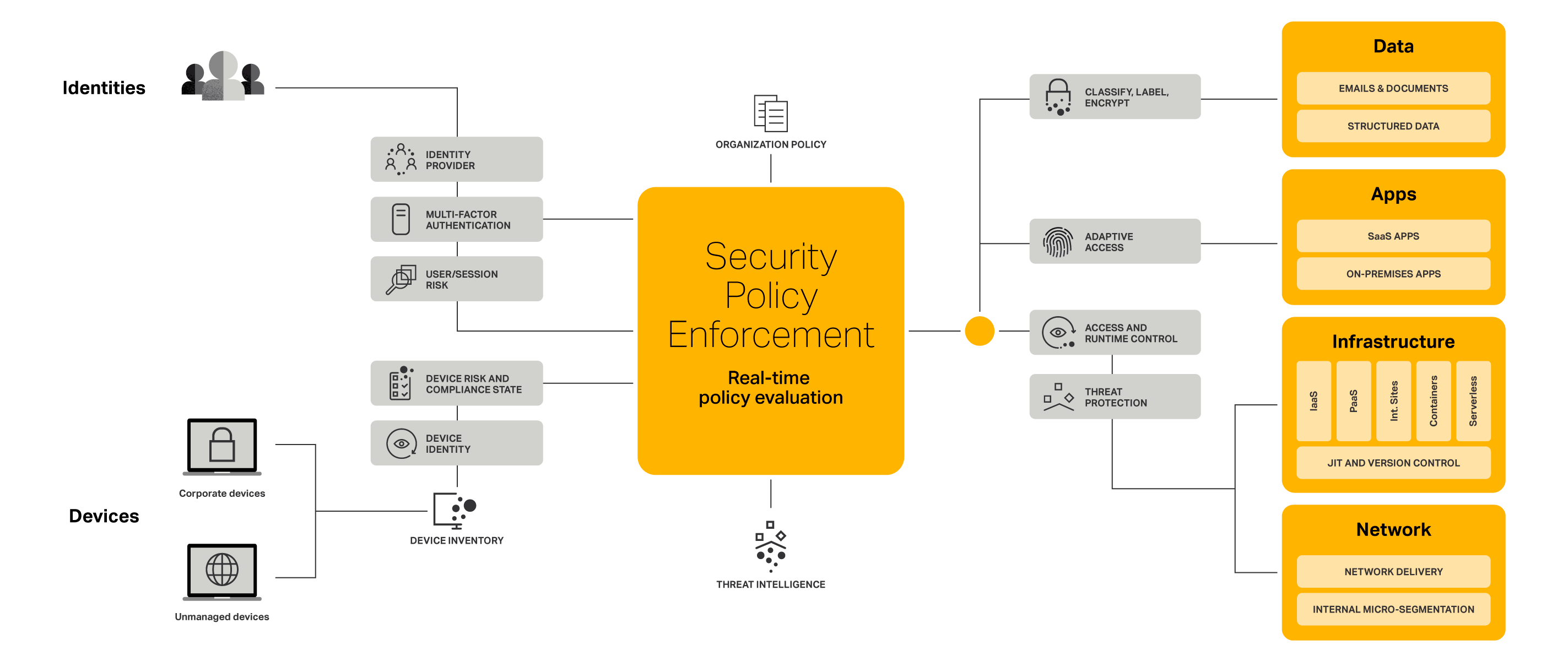
As more and more organizations are implementing the cloud successfully, its economic benefits and level of data security are documented more thoroughly. But what about the user behavior? Can it erode the investment? We take a look at the tools used to regulate behavior and why it is beneficial to involve users in the journey.
With cloud as our core competence, we follow developments closely with our customers and the market. It is our clear impression that many of the earlier myths about cloud strategies no longer apply. Both economic benefits and a high degree of data security can be realized today with the help of a well-thought-out plan for implementation, operation, and development.
One thing, however, is the economic calculations and the technological platform that paves the way for cloud-based infrastructure. A completely different thing is the employees' support for the new work routines. New IT systems come with new work routines. If they are introduced abruptly or do not seem logical, internal resistance might appear, and then the company does not realize maximum benefits.
Lars Stigaard, Team Lead Public Cloud at Sentia, zooms in on the technical part of behavior regulation and, together with Change Manager Louise Neel Høyer, points out some of the issues that may arise in relation to change management and the transition to the cloud.
From subtle hints to waving a sign
"Shadow IT is a real issue because the company's employees often will resort to their own ways of doing things if the company's IT is not working optimally," saysLars Stigaard and continues: "If the employees, for example, use their personal Dropbox, it might compromise the IT-security, and therefore the big platforms work with tools that can regulate the behavior in compliance with the company policies."
The portfolio of tools at i.a. Microsoft range from "mild" interferences in the user's freedom to the comprehensive tool Zero Trust Security:

"If a company wants to capitalize on a successful cloud strategy, the employees must fully support and use the solution. At Microsoft, you have access to a long-range of tools, from subtle nudging hints to waving the sign in your face. The basic idea is to make it impossible for the employees to do something that might comprise the security or the company's IT policy," says Lars Stigaard.
Control of resources and rights
As an organization, you will have the opportunity to manage files in various ways so no one is tempted to use unauthorized storage and distribution.
"Files can be marked for specific rights. It may be that only a particular group of employees should have the right to edit or print the files. Maybe they can only be stored in the right place, or maybe you want to keep track of where they are opened. Through rights, you can make it impossible for a particular group to act outside the rules, while the others in the organization can have more freedom. Today you can differentiate the system very fine-meshed".
It is about finding a balance. The infrastructure does not become too tightened for it to threaten productivity and make the solution sufficiently secure that valuable data is far from the danger zone. To assess these tools requires deep insights into work – and document flows.
"If the tagged files, rights management, and groups are a part of the company's cloud strategy, it is essential to map the document flows and workflows if you want all the employees to be a part of the journey. With the help from rules and systems, it can be made difficult or completely impossible for the employees to do something wrong. Still, it must also make sense in the individual departments for them to be supportive," ends Lars Stigaard.
Appoint employees as ambassadors
Louise Neel Høyer is Change Manager and partner at Human Univerz. She works with change management on all levels, and therefore she has deep insight into organizations during changes and how the employees support the change:
"It is paramount the employees feel that they have a say, and they will feel just so if you ask about their relationship and their needs before the new routines are forced upon them. The implementation of new work routines may risk having a blind spot because those responsible are so focused on the new solution that they forget how deep and fundamentally it affects all parts of the organization".
Louise Neel Høyer points out that no employee starts from scratch. They are not a blank piece of paper, which is why it is imperative to know their work situation and respect it for the employees to take full co-responsibility for the new cloud solution:
"As human beings, we have a limited amount of processing capacity available to the more complex assignments in our workday. When a part of it needs to be engaged in, for example, learning new programs or systems, there needs to be time and space to do so. Otherwise, there is a risk for employees to feel they are on shaky ground, which turns into, unconsciously or consciously, a resistance to change. A way to meet it is to involve central employees early in the process and let them pitch in with their points of view, concerns, and ideas. When employees feel their inputs are appreciated and respected, they will act more positively towards the new solution that is about to happen. The employees might even become strong ambassadors for the solution."
Most employees want to be supportive
"It is imperative not to down-prioritize the employees' involvement because they are loyal and supportive if the new initiatives make sense and optimize the company. The new initiatives should not be blindsided, and everyone does need to make sense of where the organization is headed," explains Louise Neel Høyer, who mentions a central precaution that helps to land the cloud strategy:
"Provide the time the process needs! The IT-department might have worked with the complex project for six months or more, but because it is all-new for the employees, they might resist change. Therefore, a piece of good advice is to involve the employees early in the process and inform them frequently, have well-structured arguments, and maybe complete some pilot projects to gather experiences and document that the employees are heard."
How to prevent the blind spot
In other words, if the migration to the cloud has to be successful for the company, it suggests that behavior-regulating initiatives go hand in hand with the involvement of employees. It is essential to consider factors such as optimizing operations and finances, data security, and flexibility, but equally important is to include and involve employees as a part of the journey.
Early involvement, appointing ambassadors, developing pilot projects, and ongoing information based on the employees' real wants and needs are tools that can eliminate the blind spot and open up the full return on investment.
|
|
|





